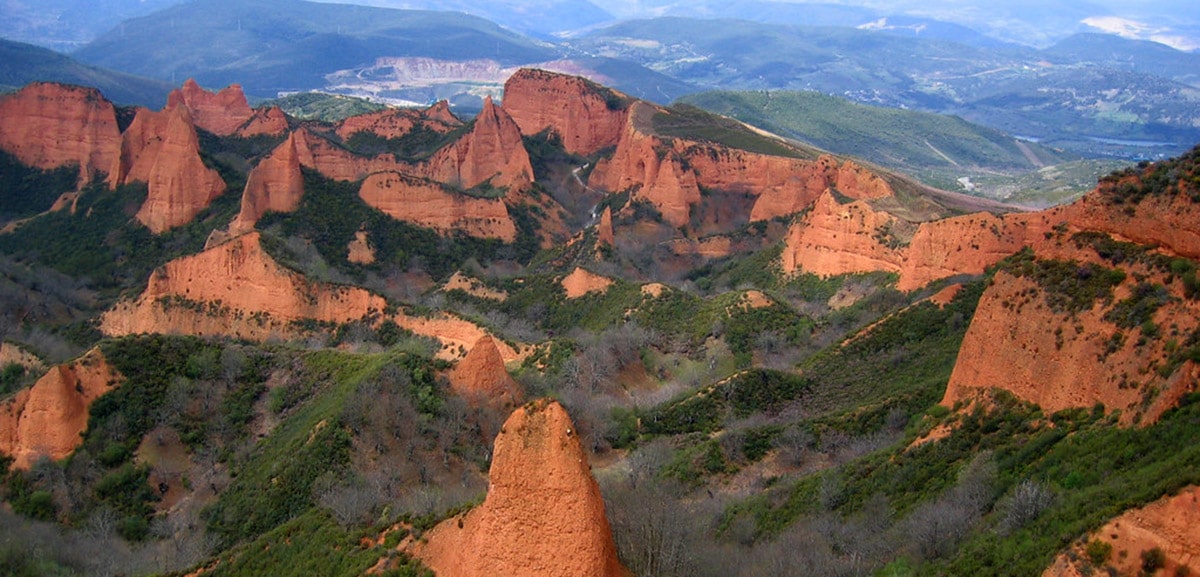
Spain It has many beautiful landscapes and some are not the work of nature but of man and his constant activity on earth. This is the case of the landscape called Las Médulas, one of the treasures of Castilla y León
Las Médulas is in the region of El Bierzo, in León, and the landscape has been sculpted from the mining carried on by the Romans. Since 1997 it is considered Heritage and since 2002 Natural Monument of Spain. Do you know him?
Las Médulas
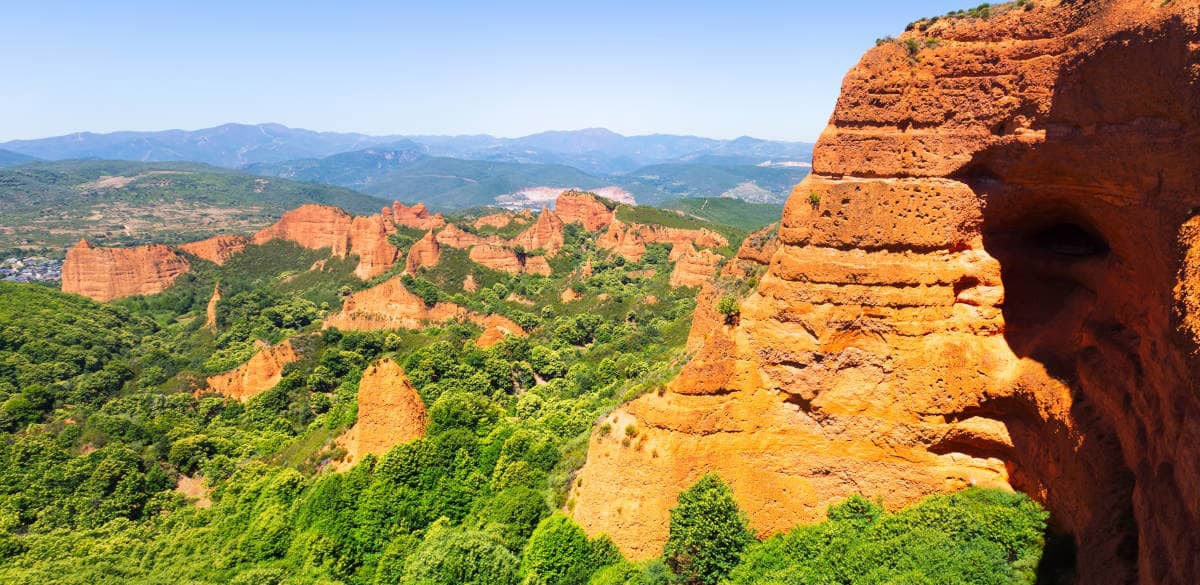
This territory hides gold and so It has been exploited not only by the Romans but by previous peoples who discovered the site. But without a doubt it was the Romans who exploited the place in a constant and organized way. It is believed that the exploitation began in the time of Emperor Octavian Augustus between 26 and 19 BC, times of the Roman conquest of the peninsula.
Pliny the Elder, a Latin writer and soldier who died in 79 AD, is said to have been affected by the gases from the eruption of Vesuvius, he was the administrator of the mines when he was young. He said that 20 thousand pounds of precious metal left these mines per year, that about 60 thousand manumitted miners worked, that is, previously released, current freedmen, who had to work to support themselves.
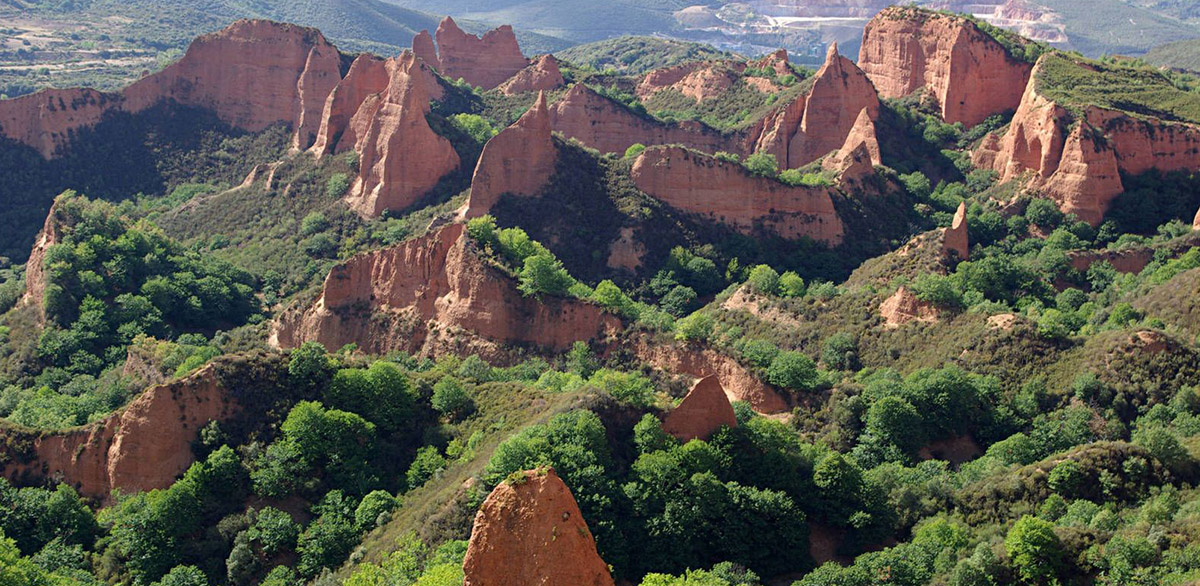
The gold deposit was abandoned in the XNUMXrd century and without human activity the vegetation was advancing under the constructions. Then came the chestnut cultivation, which served to feed the workers and whose wood later went to local construction, there are still old specimens today, so in the end and over time a whimsical landscape between reddish and green, with lagoons, took shape.
When Las Médulas was proposed as a World Heritage Site, the Thai delegation opposed it because it was not the result of nature but the hand of man, its vile exploitation, but it finally got its place on the list.
Visit Las Médulas
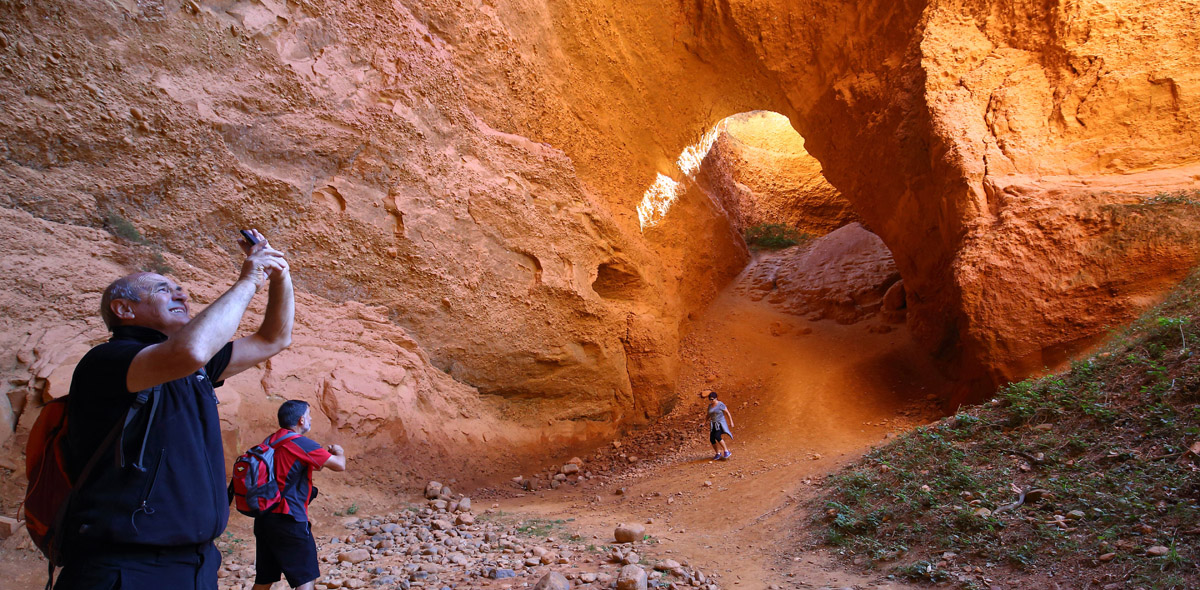
If you do not know the history of the place beforehand then the best way to start the visit is by the Archaeological Classroom. This is where we learn about the exploitation of gold, the engineering works necessary for that, how the Romans channeled the water and how all this activity changed the landscape forever. It is very interesting. Basically the method of the Romans involved undoing the mountains and collecting the gold by filtering it.
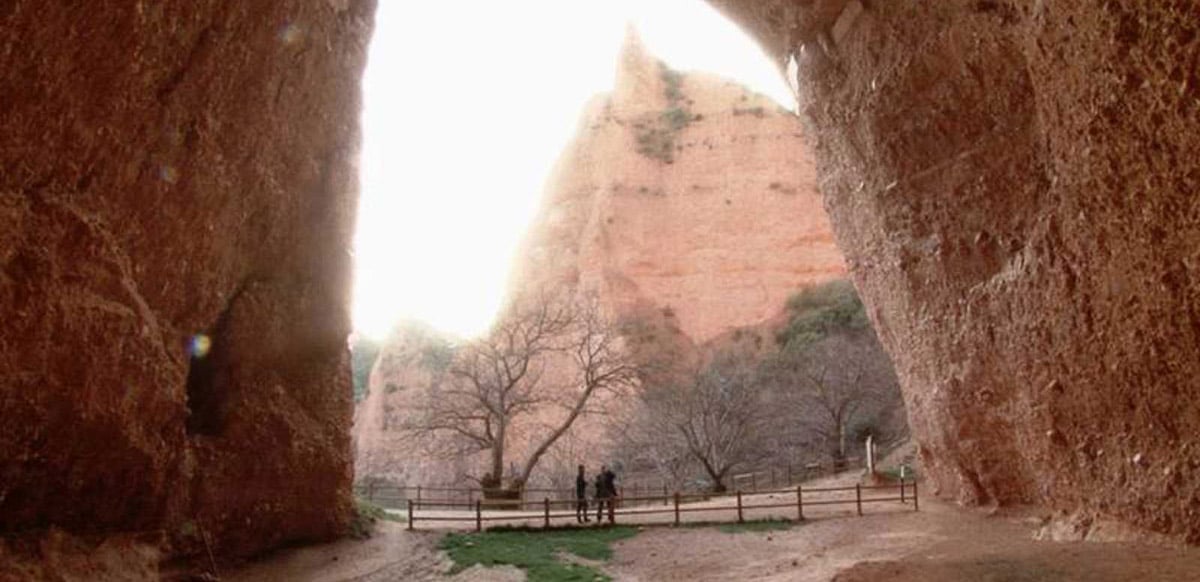
The method is called Montium Ruin and it consisted of the construction of a network of channels to bring water from the high mountains and store it in the mountains that were to be exploited. In the latter, cul-de-sac galleries were created, then the water was introduced in a rush, the air pressure rose and at the end the mountain exploded. The clay and the water were then washed in the wooden channels and the gold was extracted after filtering that in branches of heather.
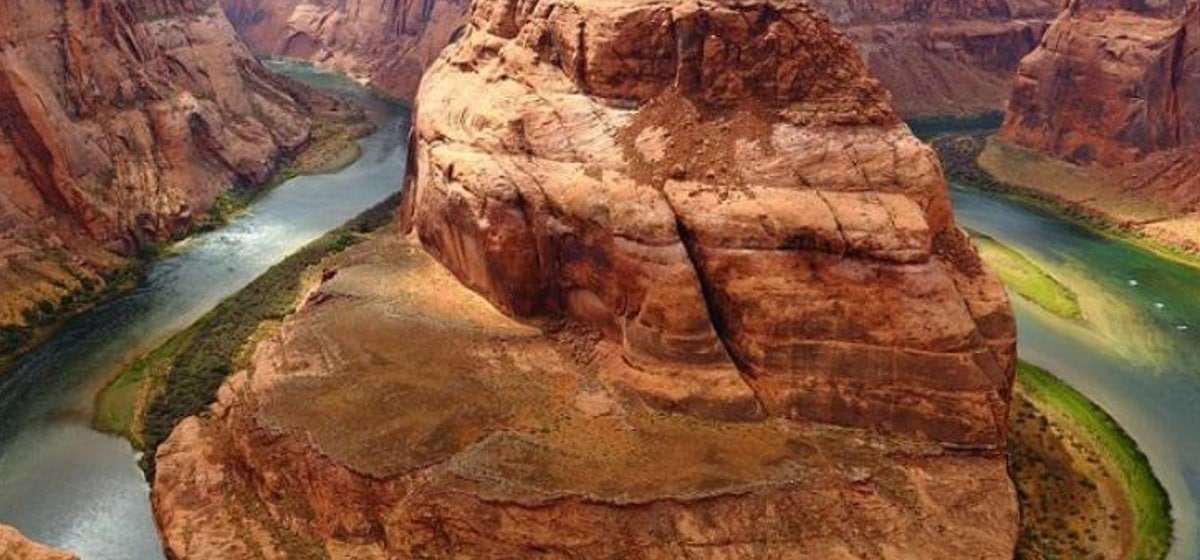
After 200 years such work the landscape changed a lot. Huge volumes of materials were removed and accumulated in the valley, the natural outlets of the water were covered, lakes were created as a consequence and clay formations of strange shapes were born, baptized peaks.
Now if this part of the story doesn't matter to you then you can just enjoy the views. For that the best place is the Orellán viewpoint, which is in the town of the same name, with sunrise and sunset being the best times to do it. Then you add the Visitor Reception Center which is where the possible visiting routes of the area, with or without a guide.
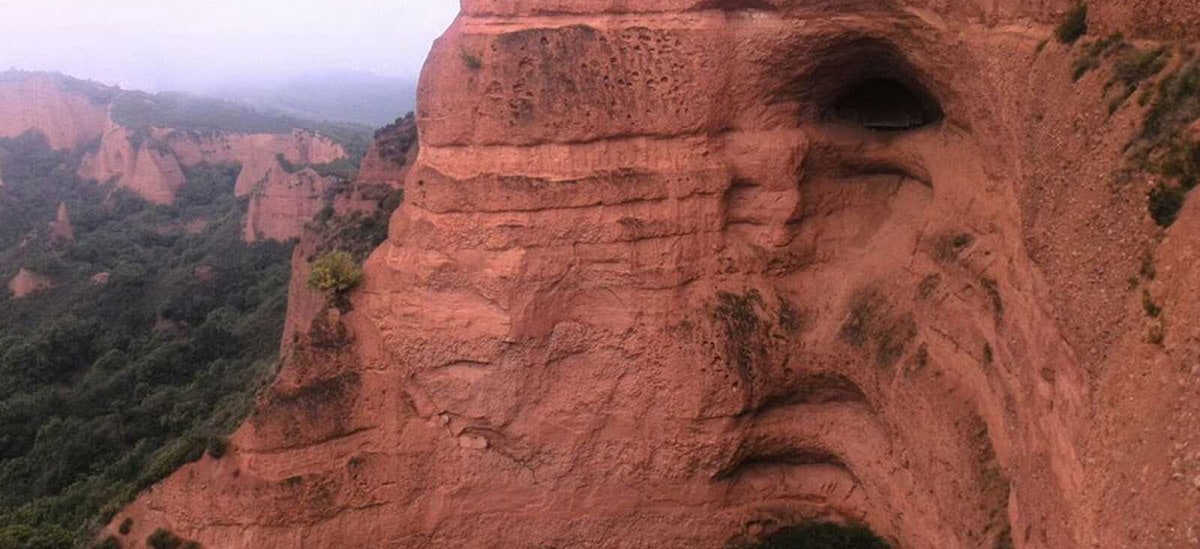
These routes are more or less long, depending on your interest, your physical condition, your time, although they recommend having at least two days for the visit to be complete. There five possible routes: Perimetral Path, Valiñas Path, Sumido Lake Path, Convents Path and Villages Route.
- Perimeter Path: this is the longest route and therefore the best if you have time because you see everything. Provides information on Roman mining, on how wetlands and lakes were formed by the use of water in this exploitation.
- Path of the Valiñas: It is a very popular and simple route that touches the main points of the area such as the caves of La Encantada and La Cuevana, the source of Tía Viviana, the town of Las Médulas, the mine itself, the chestnut trees ...
- Lake Sumido Trail: with little time it is an ideal route that includes the Mirador de Chao de Maseiros and its fantastic views. The route passes through several artificial lakes, formed by the drainage of water in the mining exploitation and by evacuating channels or gold panning. In fact, the Sumido Lake used to be a washing channel, one of the 100-kilometer network, dug many times in the rocks, which allowed the water to be brought from the highest mountains and stored for later exploitation.
- Path of the Convents: You can access it from Orellán or from the route itself and it is a complementary path to the Perimetral Path. This particular trail gives us information about some particular techniques that were used in Roman mining, the "Montium ruin" or convergent furrows.
- Village Route: It is a path that takes us back in time, to the time of the Roman Empire, and how the mining that it implemented influenced society and the terrain.
Whichever path you choose, the landscape is beautiful and allows you to get into history and reflect on how our actions on nature modify it. For better and for worse. You will see Roman ruins but also large and centenary chestnut trees, some specimens are six centuries old, for example. A beauty. As we said, You can choose to do the visit on your own or do the guided tour that can be by 4x4 truck or minibus.
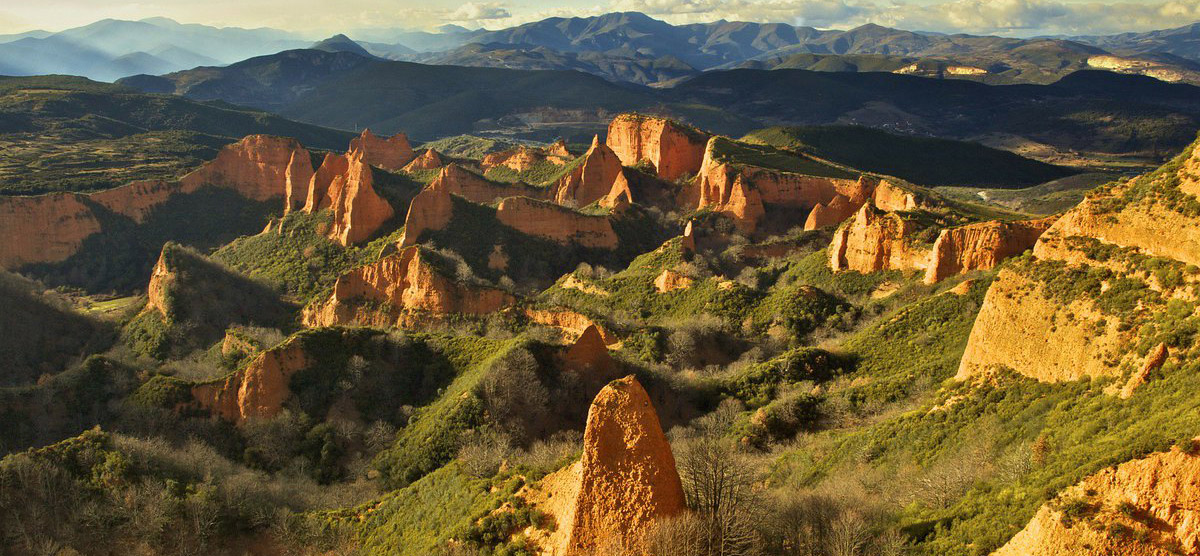
There is not a single entrance to Las Médulas but the place is well located. Yes indeed, there is no public transport within the areaBy public transport you can only get to Ponferrada on the AUPSA company buses. You can also get there by train.
Practical information about Las Médulas
- The best visit is in autumn, a time of year with incredible colors.
- The Visitor Reception Center is in the town of Las Médulas. His phone number is 987 420 708 619 258 355.
- The Interpretation Center of the Canals is in the town of Puente Domingo Flórez. Their telephone number is 987 460 371. Admission is free.
- Next to the Mirador de Orellán is the Galería de Orellán. Entry costs 2 euros per adult and 1 per child.
- The Archaeological Classroom is in Las Médulas, in Carrucedo 2442. His telephone number is 987 40 19 54. Price: 2 euros per adult and 1,5 euros for retirees. Children up to 8 years old do not pay. Guided tours are organized from here.